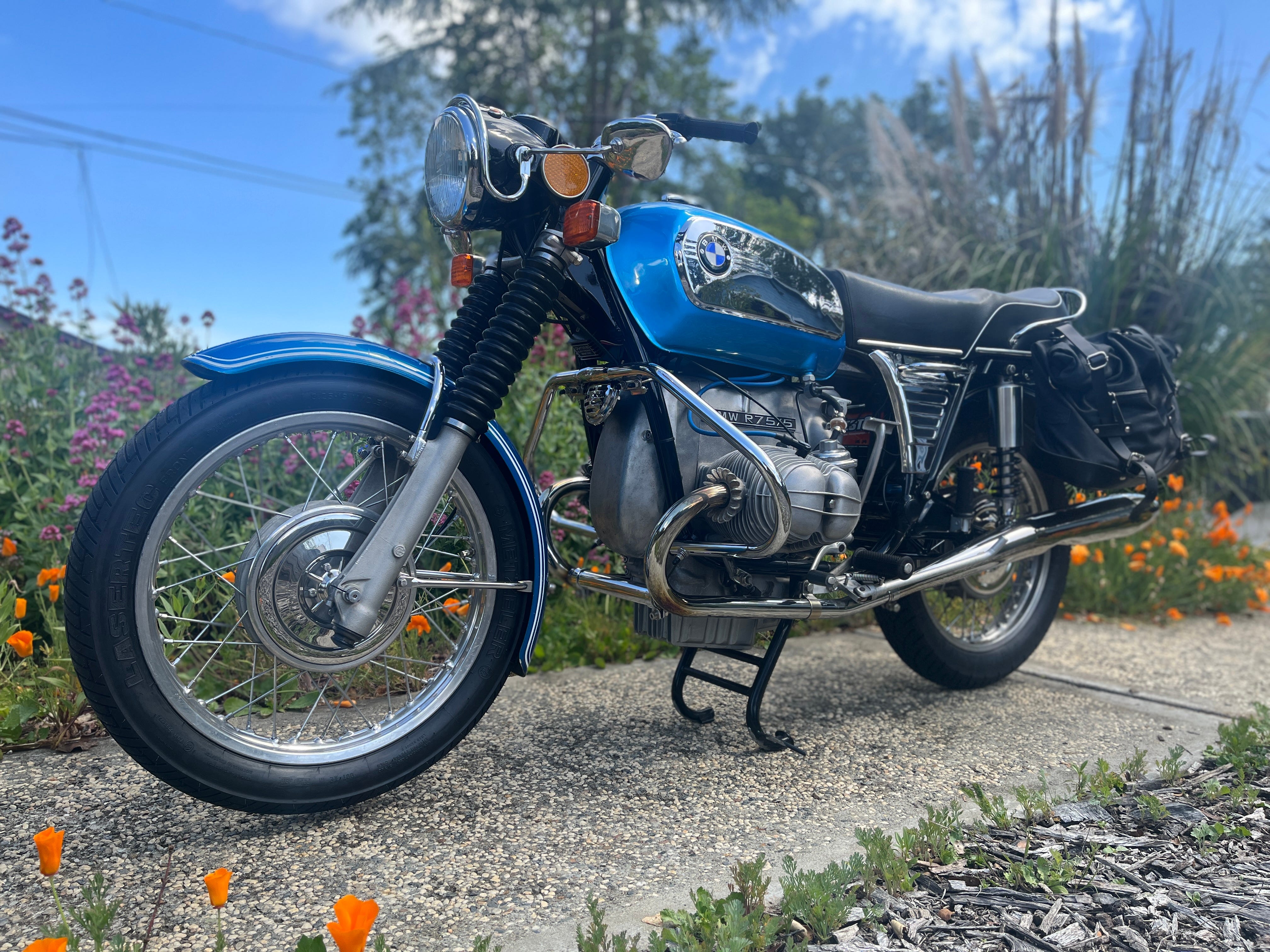
On January 1, we bought a lovely 1973 BMW R75/5 from a retired Army colonel about an hour south of here. It’s my third Beemer and second classic model, and I was stoked. Monroe had done a thorough restoration with several upgrades to the machine, and the only hiccup was having to get it registered at my local Department of Motor Vehicles. Because Monroe had it registered in Virginia, the bike needed to be verified in person at the DMV before I could receive a new title and California license plate.
Sounds simple. Two days later I rode it to the Santa Clara DMV off Flora Vista Avenue. I tried setting an appointment online, but the system would only take new driver appointments. I girded my loins after getting off the bike, knowing that it was the first day the office was open after the holidays. The line wrapped around the building.
Forty-five minutes later, once it was my turn to speak with a CA DMV rep behind a tiny podium, I was told to take the bike around the back of the building for a vehicle verification. I remounted, swung a hard right into the designated right lane, then promptly waited for over an hour as a singular CA DMV employee assisted new drivers in the designated left lane.
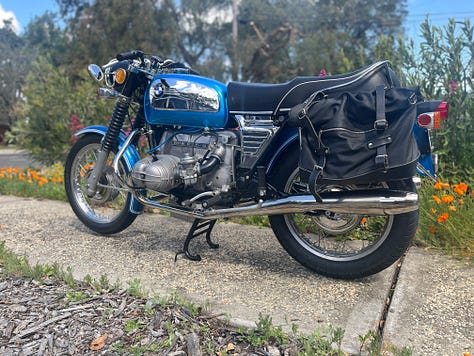
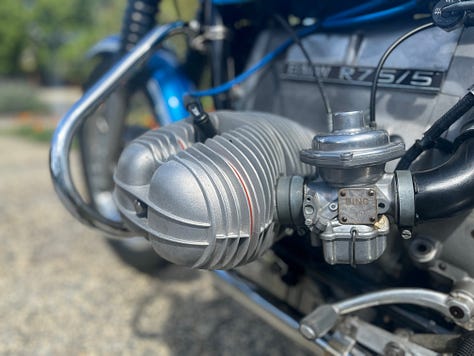
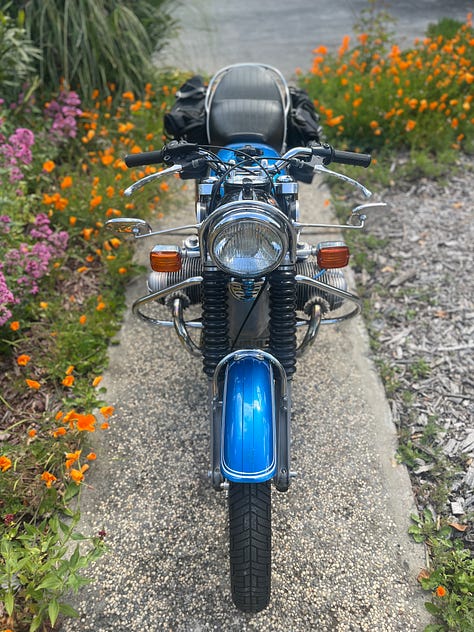

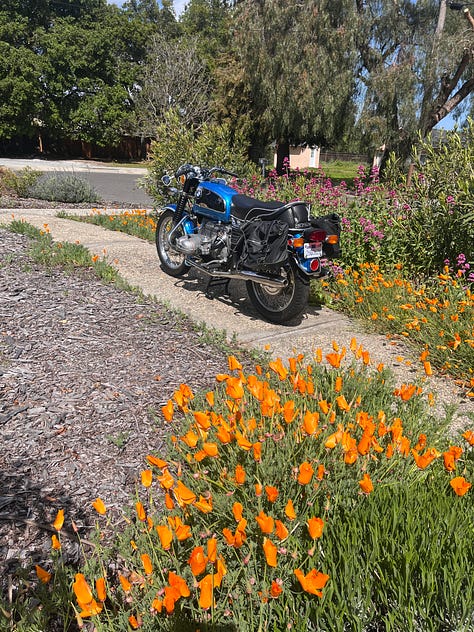

Once another DMV rep appeared to assist me, she looked at the Monza Blue tank and asked if the bike ran on gasoline, and where she could find the emissions sticker. I answered that it did indeed run on gas, and the bike was from 1973 and therefore didn’t require an emission label.
Curiously, although the car before me and the motorcycle after me needed to be turned on and turn signals activated, I wasn’t asked to do either. She filled out Reg. 31, capturing the VIN number off the headtube badge and engine number off the engine oil dipstick boss, then handed it back with a smile before walking to the next patient taxpayer. I walked into the side door of the DMV, paperwork and helmet in hand, and waited another 45 minutes to talk to another CA DMV rep in the midst of utter chaos.
I received a window number, and after waiting nearly an hour, was called up to state my case, feeling like Jerry Seinfeld with the soup Nazi. I succinctly explained my situation, presented my paperwork, waited another 15 minutes while she processed the ever-growing stack of papers, then swiped my credit card for $421, after handing over the original Virginia title and Reg. 31. She said the title and plate would arrive in the mail.
Victorious, I rode home before the rain fell, happy that I survived another mind-boggling DMV experience.
Two months later – with no CA license or title in hand – I received a packet from Sacramento, with my original paperwork and a letter addressed to DEAR VALUED CUSTOMER. The CA DMV was unable to process my application, it said, and was asking for a manufacturer letter for compliance with U.S. Federal Motor Vehicle Safety Standards, including U.S. and CA Emission.
This is where my journey took a wildly frustrating and perplexing turn. After consulting with several California-based riding pals who’ve had their share of punishing rounds in the DMV ring, it was unanimously agreed that someone in Sacramento assumed my BMW was a car, not motorcycle, and the system being rigid, required more information from me. It was a Friday.
Four days later I visited the friendly Los Gatos DMV, where Henri and I had taken our written motorcycle test many years ago. Everyone knows how efficient and smooth things roll at this location, so I rode there with all my returned paperwork after trying to set an online appointment.
Egads, it was like a nightmarish deja vu all over again. Nearly 90 minutes of waiting in line to explain my situation before receiving a window number. To pass the time I spoke with a few other disgruntled taxpayers as we sat in uncomfortable plastic chairs. Two hours later my number was called, and I explained the reason for my visit. The DMV rep called her supervisor over, who took my paperwork and made a call to the Sacramento mothership.
Fifteen minutes later, the supervisor told me to call a number to clear up the issue. I pointed out Section 9 on Reg. 31 which states it applies to: All vehicles - 1968 and newer model years, Motorcycles - 1978 and newer model years and pleaded for help - my ‘73 motorcycle should not even need Reg. 31. Her unsmiling mouth referred me to the circled phone number for the CA DMV Technical Compliance Section.
I turned, and noticing several elderly folks patiently waiting in chairs directly behind me, smiled and said “ah, life. Ain’t it grand?” Their all-knowing smiles took that DMV edge off, a reminder that I’m not the only one facing government bureaucracy and frustration, and grateful for not losing my cool.
Feeling defeated and small, I rode home in a mist of rain. After several days of trying to speak to a human in Sacramento – only to be told during the posted business hours by an automated message that ‘no one is in the office at this time’ – I was determined to find a solution. Time was running out on the temporary title I was given in early January.
On March 8, I emailed my friend Oleg Satanovsky, BMW North America’s Director of Communications, to ask if his office could provide a letter of compliance.
“This will be a tough one,” he replied the next day. “BMW of North America would not be able to provide such a letter as the company did not exist in 1973. The company began in 1975 and did not take over importing motorcycles until 1980.
“Something does not seem right with that request from CA DMV as CARB (California Air Resources Board) itself did not require any motorcycle emissions stickers/compliance until 1978, so how can they request that for a 1973 motorcycle? Might be worthwhile to ask this in a regional BMW MOA or BMW RA forum to see how other BMW owners in CA have handled this.”
Undaunted, on March 12 I emailed BMW Motorrad in Germany to see what they might be able to do. Andreas Harz responded on March 14.
“According to our database the BMW R 75/5, VIN 4003266 was manufactured in March 1973 but there are no further details known, because the delivery records are not complete anymore,” he explained. “Therefore we cannot say to what country the bike was first delivered or if it was built conformal to US standards. You might want to contact the colleagues of BMW of North America as they are more familiar with these problems, maybe they are able to help you.”
Armed with facts from the manufacturer, I rolled the dice and shared these email messages – and my reminder that the bike was five years older than the exemption cutoff per Section 9 – with importvehicles@dmv.ca.gov on March 14. Hours later I received a curt but victorious response from CA DMV rep Julissa Sagastume.
“Good afternoon. 1973 is exempt from emissions, please mail all original documents back to TCS, 2415 1st Avenue M/S C-271, Sacramento, CA 95818.”
After making and mailing copies of all the paperwork, the packet was delivered to Sacramento on March 18. I contacted the helpful rep to check on its status on April 12. Sierra Lozoya responded with “this was cleared last week (April 6) so you should receive the title by next week, as it normally takes 2-3 weeks.”

True to her promise, my CA license plate arrived April 17. The title is still in progress, apparently, but the heavy lifting has been done.
I’ve learned plenty through this exercise. First, ask around to see what others have experienced before jumping into any DMV experience head first like a good taxpayer should. Second, it’s a good thing I’m persistent and self-employed, because the time I spent in DMV hell would’ve been nearly impossible for a nine-to-fiver. Lastly, everything in life turns into a good story to share, especially one about a beautiful blue motorcycle.
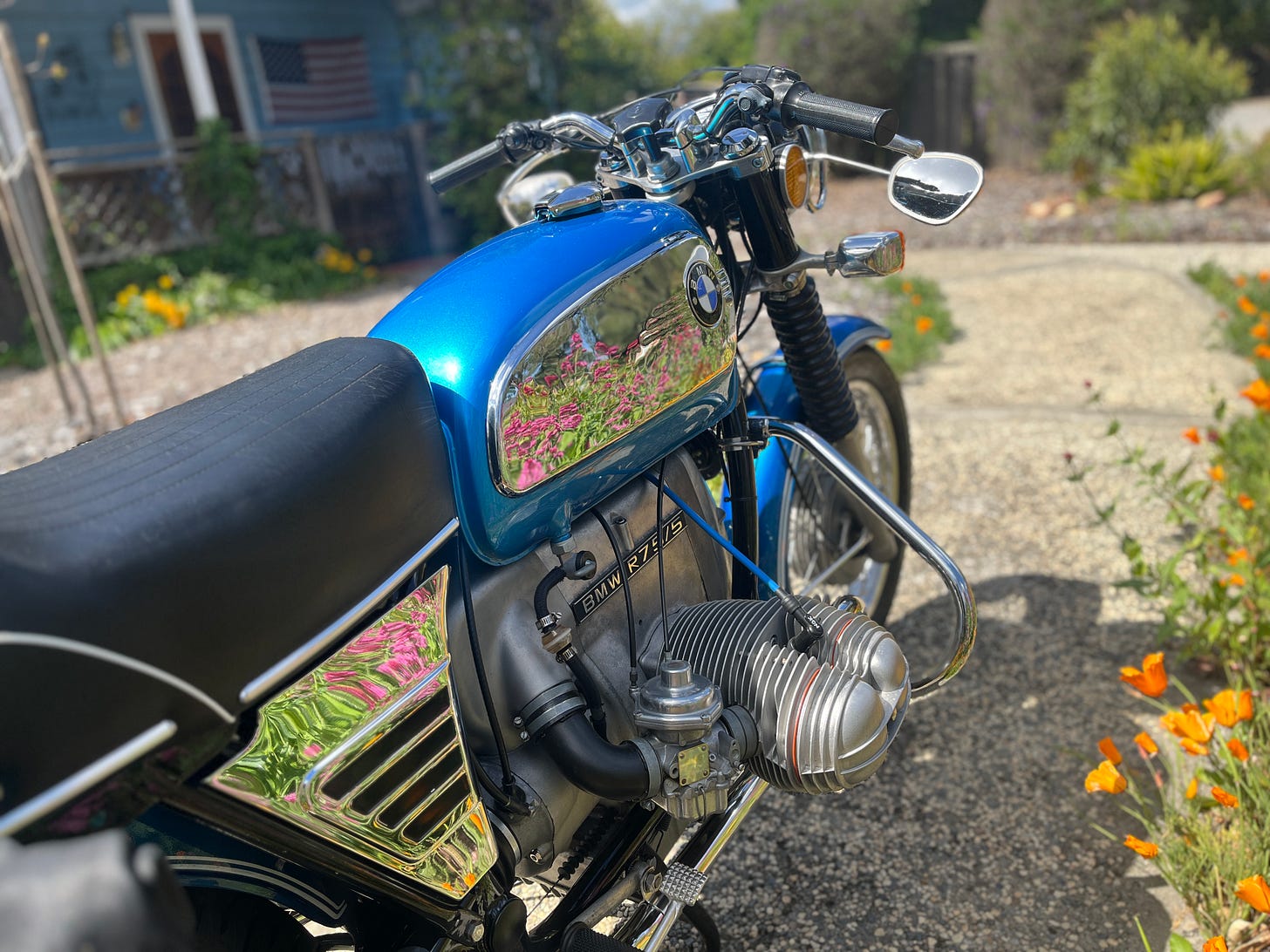
Speaking of good stories, my pal and neighbor Matt Crawford moved back to California in 2019 after several years in Virginia. He had several vehicles to register with the CA DMV, including one he referenced in his best-selling book Shop Class As Soulcraft. Matt recently wrote about the CA DMV and seeking the Smog Lady here.
What’s your DMV story? Let us know below, after my CA DMV factoids.
The California DMV is notorious for red tape, disorganization, poor communication and utter confusion. Not to mention the exorbitant fees to register and maintain ownership of vehicles in a state with some of the worst roads in the country.
The economy of the State of California is the largest in the United States, with a $3.598 trillion gross state product (GSP) as of 2022. It’s also the largest sub-national economy in the world. If California were a sovereign nation, it would rank as the world's sixth largest economy in terms of nominal GDP, behind Germany and India.
Like most states, government is California's largest industry, with about 2.5 million employees. The second largest industry is healthcare and social assistance.
Also in California, used cars have a 7.25 to 10.0 percent sales tax applied to the purchase price. This sales tax is applied to all new and used cars, planes, and boats purchased even if they are purchased out of state. In addition to having a clear title, a passed smog and emission inspection on the vehicle plus proof of insurance are needed before a car can be registered.
New residents to California are required to register their vehicles within 20 days of establishing residency. A DMV employee will perform a physical inspection of the vehicle and verify the vehicle identification number (VIN) before one receives a California registration certificate, license plates and correct yearly registration stickers for the vehicle. State and local government vehicles are exempt from paying fees and are issued "exempt" license plates.
California vehicle license fees are 0.65 percent of the depreciated vehicle's value. These fees are applied annually. Licenses are renewed in the month the vehicle was originally registered and have a yearly sticker applied to them after paying the registration fee to show fee payment.
In California gasoline is taxed at $0.719/gallon and diesel at $0.749/gallon, the highest in the nation. The state legislature switched its gas taxation system in 2010 so it could re-appropriate some of the gas and diesel tax money from road maintenance to other areas of the state budget which was in deficit. Since they repurposed much of the state and federal fuel taxes there are now complaints that there’s not enough money in the transportation funds to do all the required highway upgrades and maintenance.
How big is the CA DMV? In 2020, 10,062 employees at 229 locations/facilities processed 84,322,667 annual transactions, including 35,820,417 registered vehicles, and 33,509,549 drivers license/ID cards. This includes 5,905 business partner sites and 181 auto clubs.
Where does the money go? Based on 2019/2020 fees records, revenue percentages are doled out to Local Government (cities/counties): 34.5%; California Highway Patrol (CHP): 19.0%; DMV: 11.3%; State Highways (CalTrans): 25.1%; California Air Resources Board (CARB): 2.3%; General Fund: 0.5%; Environmental Agencies: 0.5%; Department of Justice (DOJ): 0.2%; Other State Agencies: 4.2%. Annually, the CA DMV collects and tracks over $7 billion in revenue.




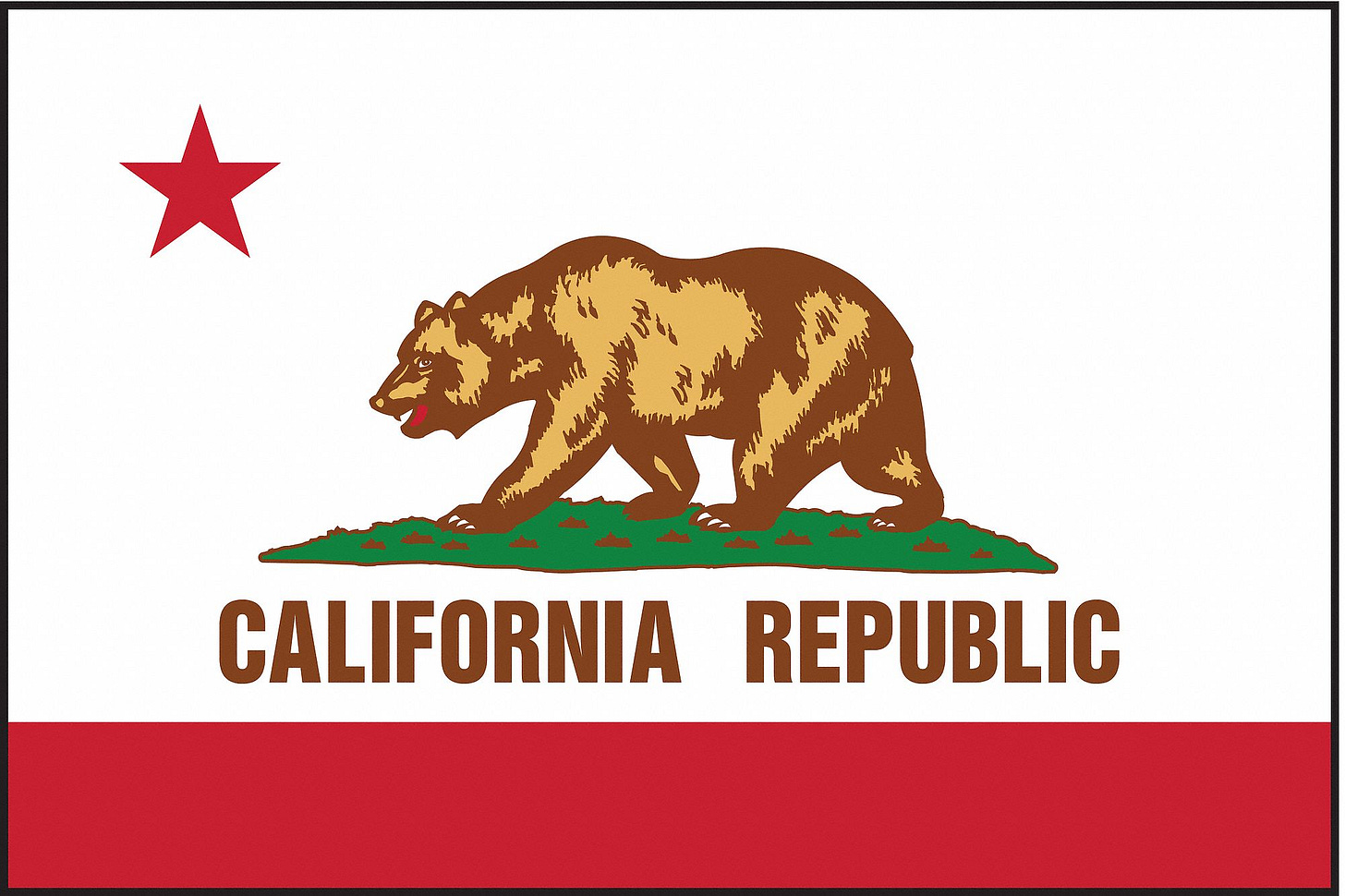
This story makes the UK DVLA (Driver & Vehicle Licensing Authority) look almost efficient (which is isn't). Whatever, it is an indictment of the principle of government bureaucracy and state regulation, indeed democracy itself - because in none of them is there any drive or incentive for excellence or efficiency: no accountability for process, service or delivery. That this is capitalist America, the much-vaunted "leader of the world", is a salutary revelation to those lesser nations who would emulate it
Hopefully a good long ride will flush the DMV hell experience from your memory. Enjoy!